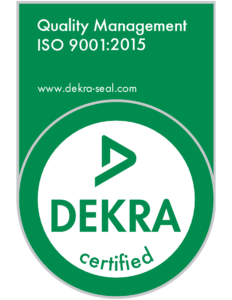Article Category: Material Selection
- Home
- Knowledge Base
- Material Selection
Material Selection
Can Tritan plastic be joined using spin welding?
Yes, Tritan plastic can be joined using spin welding. Spin welding is a commonly used joining method for thermoplastics, including...
What plastics can be welded with Infrared Welding?
Infrared welding can be used to weld a variety of thermoplastic materials, including: The suitability of a particular plastic for...
What types of materials can be spin welded?
Spin welding is a technique that can be used to join thermoplastics materials with similar or dissimilar melting points. Some...
How do mold release agents affect in ultrasonic welding?
Mold release agents are typically used to facilitate the release of plastic parts from the mold during the injection molding...
Can you spin weld ABS?
Yes, ABS (Acrylonitrile Butadiene Styrene) can be spin welded. It is a thermoplastic material that can be welded using spin...
How does hygroscopicity affect in ultrasonic welding?
Hygroscopicity is the ability of a material to absorb moisture from the environment. In ultrasonic welding, the presence of moisture...
Can you spin weld polyethylene?
Polyethylene is not typically recommended for spin welding due to its low melting point and low coefficient of friction, which...
Can you spin weld polycarbonate?
Yes, polycarbonate is a material that can be spin welded. Spin welding can create strong, hermetic seals between two polycarbonate...
What is Tritan plastic?
Tritan plastic is a type of copolyester plastic that was developed by the Eastman Chemical Company in the early 2000s....
Can Tritan plastic be joined with ultrasonic welding?
Yes, Tritan plastic can be joined with ultrasonic welding. Ultrasonic welding is commonly used to join various types of thermoplastics,...
What types of plastic polymers are ultrasonically weldable?
Ultrasonic welding is a versatile process that can be used to weld many different types of plastic polymers. The weldability...
What does regrind mean in plastic welding?
Regrind is a term used that refers to plastic material that has been recycled or reprocessed and added to the original resin.
What is Semi-crystalline plastic?
Semi-crystalline plastics require a high heat and high energy/amplitude. Semi-crystalline materials attenuate the vibrations more and are more "spongey".
What is hygroscopicity in plastic welding?
Hygroscopicity is the tendency of some plastics to absorb moisture from the air. When a polymer absorbs moisture, it can affect weldability.
What is Amorphous plastic?
A thermoplastic which has a random molecular structure. Examples are ABS, Polycarbonate, and Polystyrene.
Knowledge Base Categories
- Ultrasonic Welding
- Ultrasonic Transducer
- Ultrasonic Transducer
- Ultrasonic Tooling
- Ultrasonic Techniques
- Ultrasonic Staking
- Ultrasonic Process Optimization
- Ultrasonic Process Control
- Ultrasonic Joint Design
- Ultrasonic Horns
- Ultrasonic Boosters
- Spin Welding
- Materials and Design
- Material Selection
- Maintenance
- Infrared Welding
- Heat Staking
- Gluing and Solvent Bonding
- Assembly Methods
Contact Info
- Monday - Friday
8:00 AM - 4:00 PM ET - 321-622-8584
- 3153 Skyway Circle, Melbourne, FL 32934
- info@trineticsgroup.com
Registrations
UEI ID: Z6T3GLT5YFZ9
CAGE Code: 8B6Y5
DUNS #: 105213696
NAICS Codes: 339999
ISO 9001:2015 Certified

© 2025 Trinetics Group. All Rights Reserved
